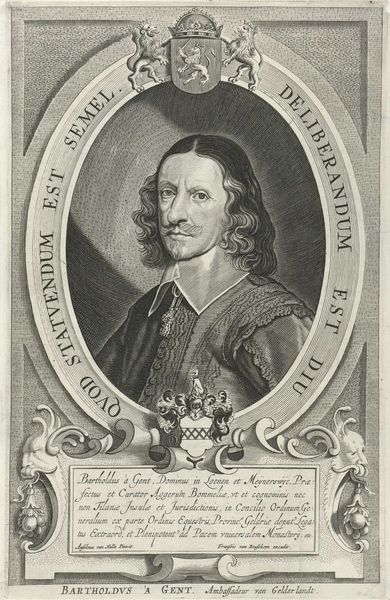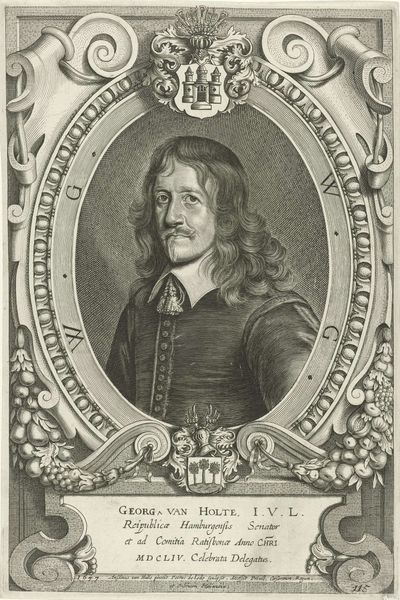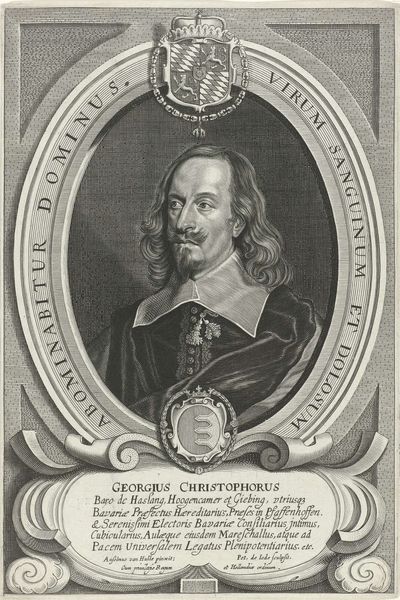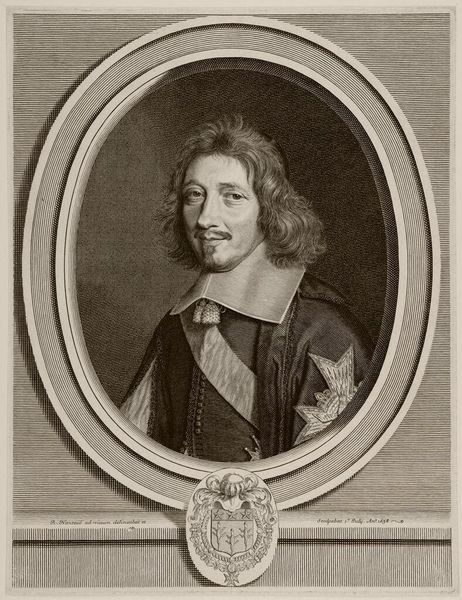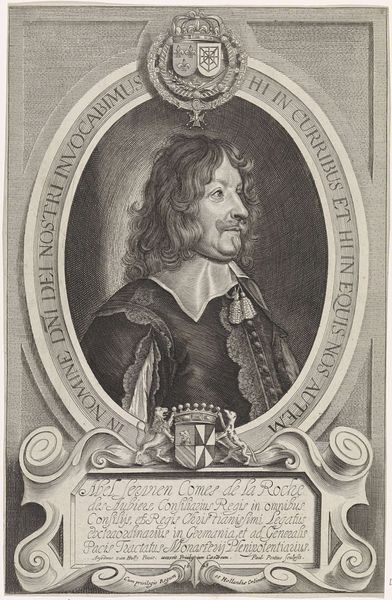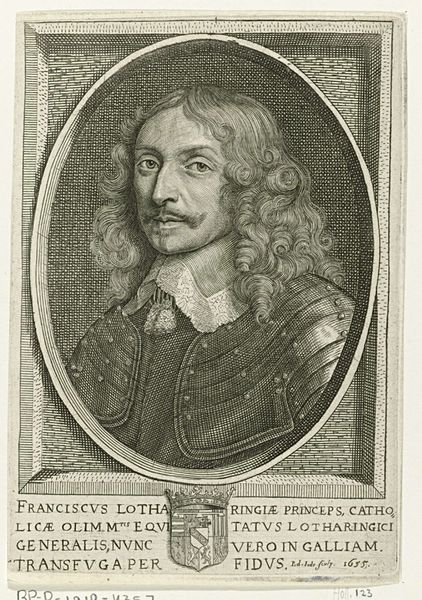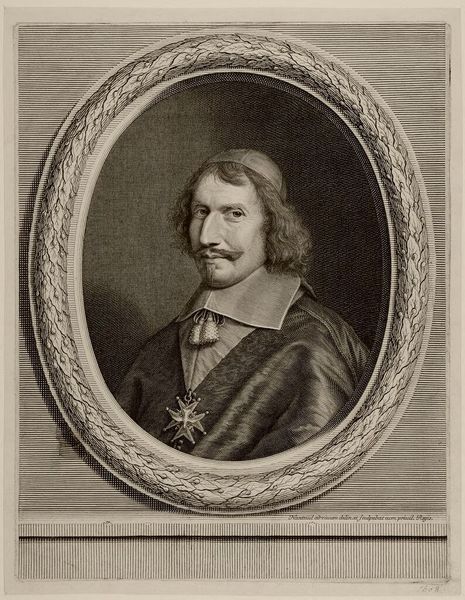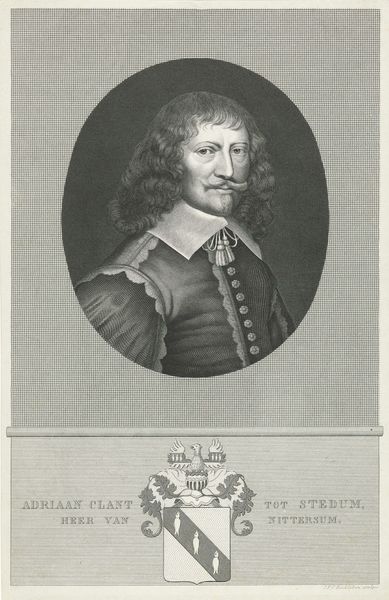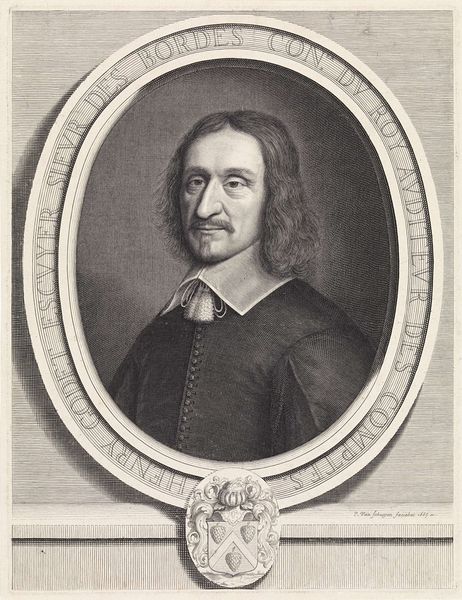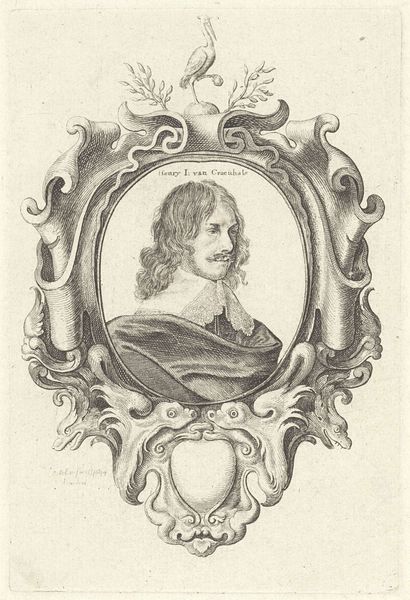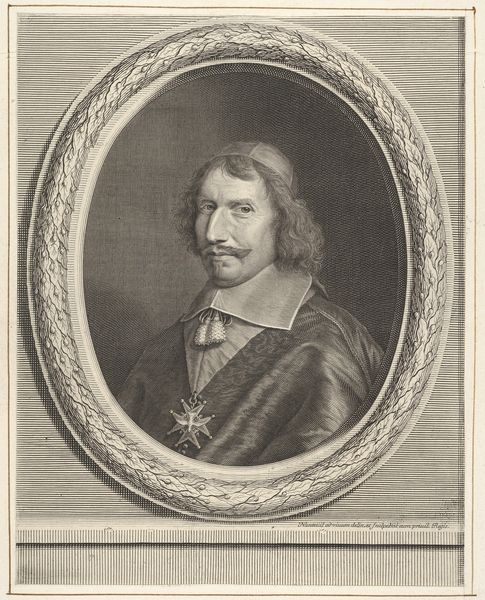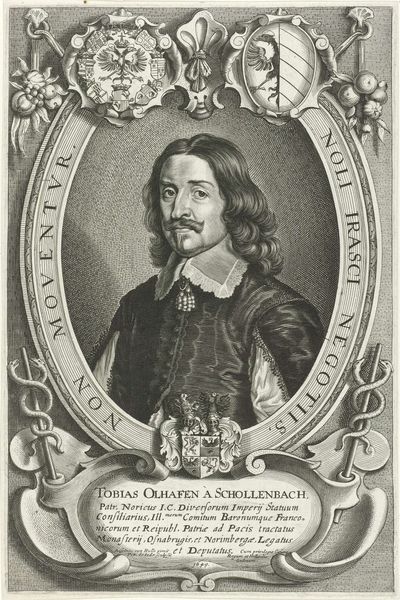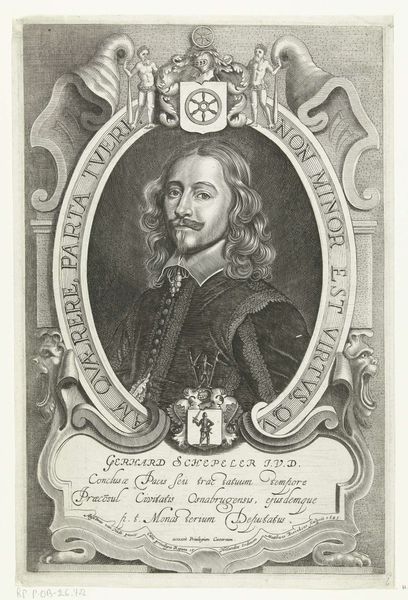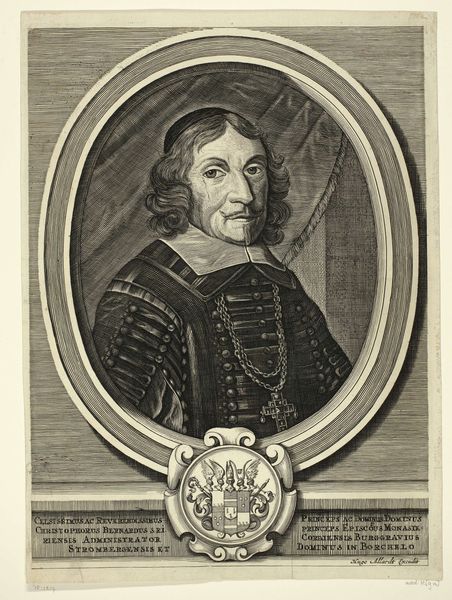
Portret van Barthold van Gent, graaf van Loenen en Meynerswijck 1648
0:00
0:00
print, engraving
#
portrait
#
baroque
#
dutch-golden-age
# print
#
old engraving style
#
traditional media
#
history-painting
#
engraving
#
realism
Dimensions: height 309 mm, width 201 mm
Copyright: Rijks Museum: Open Domain
This print of Barthold van Gent, Count of Loenen and Meynerswijck, was created by Pieter de Jode the Younger in the 17th century. We can read it as a representation of power and status within the specific social and political context of the Dutch Golden Age. The visual codes are clear: the portrait is framed by heraldic symbols of nobility, signalling Barthold’s lineage and authority. The Latin inscription below further emphasizes his titles and achievements. Created during a time of significant economic and cultural flourishing in the Netherlands, this portrait reflects the values and aspirations of the Dutch elite. Institutions like the aristocracy and the church were central to the structures of power. To fully understand this image, one would need to delve into the history of the Dutch nobility, their role in society, and the ways in which they sought to legitimize their status through visual representation. Archival documents, genealogical records, and studies of Dutch society would all be invaluable resources in piecing together the full story behind this portrait. Ultimately, it reminds us that art is deeply embedded in the social and institutional contexts in which it is made and viewed.
Comments
No comments
Be the first to comment and join the conversation on the ultimate creative platform.
